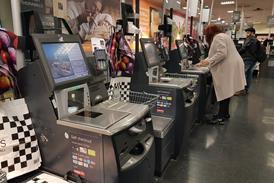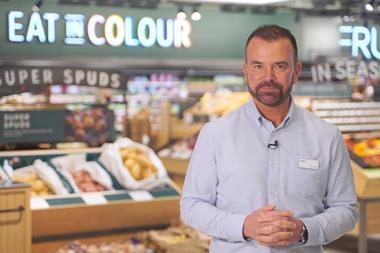DIY giant B&Q is set to launch a series of multichannel initiatives next year including kiosks and an overhauled website as it sublets store space for the first time to Asda as part of its plan to reduce its footprint as multichannel sales grow.
B&Q has split its 120,000 sq ft store in Belvedere, south London and sublet 60,000 sq ft of space to Asda, which is understood to be opening one of its smaller format Supermarket stores there.
It is the first time B&Q has carved up a store as it reassesses its large portfolio in the multichannel era. The B&Q store will relaunch on October 26. Asda’s opening date is to be confirmed.
At an analyst trip to B&Q sister business Screwfix’s Stoke head office on Friday, B&Q chief executive Martyn Phillips admitted that carving up stores is a “notoriously difficult thing to do” but added: “We’re seeing how much money we can take with less space. It’s about [reducing] densities, not taking categories out.”
Last month group chief executive of B&Q owner Kingfisher Ian Cheshire revealed that a property review is underway at the UK’s largest home improvement retailer in light of growing online sales.
The retailer also last week shed 220 staff – as well as created 100 new positions – to ensure it has a more “customer centric” head office that can execute the omnichannel strategy. “There was clearly a cost saving element but we also need to gear the business up to be a beyond-store organisation,” said Phillips.
B&Q is also revamping its website under new customer director Steve Robinson, the former boss of both M&M Direct and Tesco.com who was hired this year.
The retailer aims for online sales to account for 10% of overall sales in the next 3-5 years. Currently, said Phillips, web sales account for “virtually next to nothing”.
Robinson is overseeing an expansion of SKUs offered online from 10,000 to “north of 20,000” next year.
“We are step changing the range in the next 12 months,” said Robinson.
Next year B&Q will trial kiosks and tablets in store as part of the omnichannel strategy. In January it will unveil an App for its recently launched B&Q Club – an email-based promotions initiative launched in recent weeks that offers customers relevant deals.
Sister chain Screwfix, a trade business based on a strong multichannel model, is sharing best practice with B&Q via a three-year initiative called Project Darwin - which it is already half way through - and Kingfisher is investing about £60-£65m in a new web platform, which is being designed so that it can eventually be used across the group.
B&Q has in recent weeks begun using the Screwfix distribution facility to fulfil its next day delivery orders.
“DIY.com in Q3 will look and feel a bit different,” said Robinson. “We’ll be piggybacking on Screwfix’s facility.”
Phillips said store expansion is not a priority for B&Q, adding that while there are “15-20 stores we’d like to be in, we want to get the space we’ve got now working better”.
Screwfix
One part of the Kingfisher business that is still expanding its store base is Screwfix, said group chief operating officer Euan Sutherland.
“It’s a very high returning, low cost model that targets a very specific part of the market,” he said.
Screwfix achieved a 19.1% surge in retail profit to £20m in its first half, while B&Q’s retail profit declined 25.1% to £125m in the same period, due to unseasonably wet weather.
Screwfix has 250 stores but can see room for up to 400-420, and is expanding aggressively.
Aimed squarely at the tradesman, it is based on a strong multichannel, Argos-type model.
Screwfix boss Steve Willet said: “The key thing is convenience, [so the tradesman can get] in and out very quickly. It’s about speed and availability.
“Screwfix is the leader of the group in multichannel.”
The website attracts 1 million unique visitors a month and can offer click and collect in three minutes. Mobile accounts for 16% of overall traffic, and tablets account for 10%. Screwfix has installed 486 You Tube videos on how to use products, which have been viewed 875,000 times.
“The tradesman is far more technologically aware than you’d think,” said Willet.
Willet said the business relies on data. “[Originally] we were effectively a catalogue business, doing direct marketing. We can’t do anything without doing customer mining.”
Screwfix has a flexible property requirement meaning it can open in “anything”, including an old car show room, according to Willet. “It gives us flexibility of roll out,” he said.
Screwfix began opening physical stores when it realised that “the tradesman doesn’t plan very well”, with 70% of their purchases being made on the same day. “We had to go to a physical store presence to capture that market,” he said.
Sutherland said the group is considering taking the brand to France, Kingfisher’s largest market, where it already operates the Castorama and Brico Dépôt brands.
The business has also just launched its own brand clothing range for the tradesman, Site, which is also being rolled out to Brico Dépôt.
The Screwfix distribution facility houses 23,000 SKUs and processes 40,000 orders along 5km of conveyor belt. At full capacity, the number of orders could double or triple.











![Ollie Pryor[46]](https://d53bpfpeyyyn7.cloudfront.net/Pictures/274x183/1/7/1/3119171_olliepryor46_336332_crop.jpg)
















No comments yet